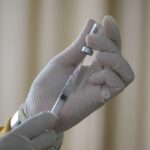
Blood tests play a pivotal role in modern healthcare, providing crucial insights into an individual’s health status, diagnosing diseases, and monitoring treatment effectiveness. While the anticipation of a blood test may evoke discomfort or anxiety in some individuals, the process is typically routine and straightforward.
However, it is noteworthy that healthcare providers often recommend patients to be in a seated position or slightly elevated position during blood tests, and lying down is discouraged. This seemingly simple instruction is grounded in the intricate dynamics of human physiology and medical best practices. Read on to learn why a person can’t lay down for a blood test and how it impacts their care.
Physiology of Blood Flow
The physiology of blood flow serves as a foundational element in the execution of blood test procedures, influencing the choice of patient position during the process. When individuals undergo a blood test, the gravitational force plays a significant role in the dynamics of blood circulation. Sitting during a blood draw is preferred due to the natural effects of gravity on blood flow, aiding in the efficient and prompt filling of blood collection tubes.
In a seated position, the gravitational pull facilitates a downward flow of blood toward the veins in the arm, making it more accessible for healthcare providers to locate suitable veins for the procedure. This position optimizes the venous blood draw process, ensuring a smoother and more effective blood collection experience.
Conversely, lying down during a blood test disrupts the natural flow dynamics, as gravity is no longer aiding the blood’s movement toward the desired veins. Muscle contractions, which also play a crucial role in facilitating blood flow, are less engaged when an individual is in a horizontal position.
As a result, sitting during a blood draw is not merely a matter of convenience but is grounded in the intricate interplay of physiological factors that collectively contribute to the success and efficiency of blood testing procedures. Healthcare providers prioritize these factors to ensure accurate results and minimize potential complications, reinforcing the significance of adhering to recommended patient positions during blood tests.
Vein Accessibility
The accessibility of veins is a critical consideration when determining the most suitable position for blood tests. In the context of blood test procedures, healthcare providers emphasize the need for patients to be in a seated or slightly elevated position rather than lying down. This preference is intricately linked to the varying positions of veins in different body postures.
When individuals are seated, the veins in their arms are more prominent and easily accessible, simplifying the process of identifying suitable sites for blood draws. The alignment of the veins in an upright position facilitates a smoother and more efficient blood collection experience, reducing the likelihood of complications such as difficulty locating veins or accidental needle insertions.
On the other hand, lying down can alter the distribution of blood vessels, potentially making it challenging for healthcare providers to identify and access veins accurately. The gravitational effects, coupled with changes in the alignment of veins, may complicate the blood draw procedure and increase the likelihood of errors.
Vein accessibility is paramount for the success of blood tests, as it directly impacts the precision and speed with which healthcare providers can obtain the necessary samples. Therefore, the recommendation for patients to sit or be slightly elevated during blood tests underscores the importance of optimizing vein accessibility to ensure the accuracy and efficiency of diagnostic procedures.
Patient Comfort and Safety
Beyond the technical aspects of blood tests, the choice of patient positioning during the procedure is also driven by considerations of patient comfort and safety. The psychological impact of body position on individuals undergoing blood tests is substantial. Sitting during a blood draw is generally more comfortable for patients, as it aligns with the natural posture assumed in most everyday activities. This positioning helps alleviate potential anxiety or discomfort associated with medical procedures, contributing to a more positive patient experience. Additionally, being in a seated position allows patients to maintain a greater sense of control and awareness during the blood test, fostering a collaborative and communicative environment between healthcare providers for those undergoing the procedure.
In terms of safety, patient cooperation is crucial for both the accurate collection of blood samples and the overall well-being of the individual. It’s important for both patient and provider to follow blood sampling best practices. Lying down during a blood test poses certain risks, such as the potential for fainting or dizziness. The act of sitting or being slightly elevated minimizes the risks by ensuring a more stable and controlled environment.
Healthcare providers prioritize patient safety by recommending positions that reduce the likelihood of adverse reactions, enhancing the overall reliability and success of blood test procedures. In essence, the emphasis on patient comfort and safety aligns with a holistic approach to healthcare, recognizing that a positive experience contributes to better cooperation, more accurate results, and improved overall well-being for individuals undergoing blood tests.
Wrapping Up: Healthcare Provider Perspective
From the healthcare provider’s standpoint, recommending patients to sit or be in an elevated position during blood tests is rooted in practical considerations that optimize the efficiency and effectiveness of the procedure. The seated position offers healthcare professionals easier access to veins in the arms, streamlining the blood draw process and reducing the likelihood of complications. Venipuncture, the technique used to collect blood samples, is facilitated when patients are seated, as it aligns the veins in a manner that allows for more straightforward needle insertion and blood collection. This preference for a specific patient position is not only based on convenience but also on the provider’s commitment to delivering accurate and timely results while minimizing any discomfort or potential risks.
Moreover, healthcare providers prioritize the logistics of blood test procedures, and the seated position contributes to the overall efficiency of clinical workflows. Sitting down during blood draws allows for a more seamless and standardized approach to sample collection, enabling providers to maintain a consistent and reliable process across a diverse patient population.
In essence, the healthcare provider perspective emphasizes the alignment of patient positioning with the technical demands of blood test procedures, ensuring that the collection of vital diagnostic information is conducted with precision, safety, and an unwavering commitment to the well-being of the patient. Want to learn more about blood testing? Read our blog to learn more about what a blood test can tell you about your health.






